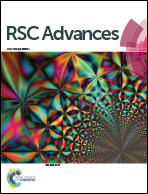A model for tensile strength of polymer/clay nanocomposites assuming complete and incomplete interfacial adhesion between the polymer matrix and nanoparticles by the average normal stress in clay platelets
Abstract
In this article, a model for tensile strength of polymer/clay nanocomposites (PCN) is suggested assuming perfect and imperfect interfacial adhesion between the polymer matrix and platelets by the average normal stress in clay platelets. This model applies different parameters such as the length (l) and inverse aspect ratio of platelets (α = thickness/length), “Lc” as the crucial length of platelets in which the normal stress reaches to the tensile strength of nanoclay and interfacial shear strength (τ). Moreover, the suggested model is coupled with other valid models for the tensile strength of PCN to evaluate its accuracy and define the interfacial parameters based on “Lc” and “τ”. The best levels of interfacial parameters and tensile strength of PCN are obtained by small values of “Lc” and “α” as well as high ranges of “l” and “τ”. A low “Lc” demonstrates that the average normal stress reaches filler-strength in a large part of the platelets, which provides a significant level of interfacial interaction. Also, a high level of “τ” shows a great shear strength of the interface/interphase which improves the tensile strength of PCN. Moreover, the minimum and maximum levels of the “B” interfacial parameter in the Pukanszky model are calculated as 2.4 and 65 at Lc = l/2 and Lc = 0, respectively.


 Please wait while we load your content...
Please wait while we load your content...